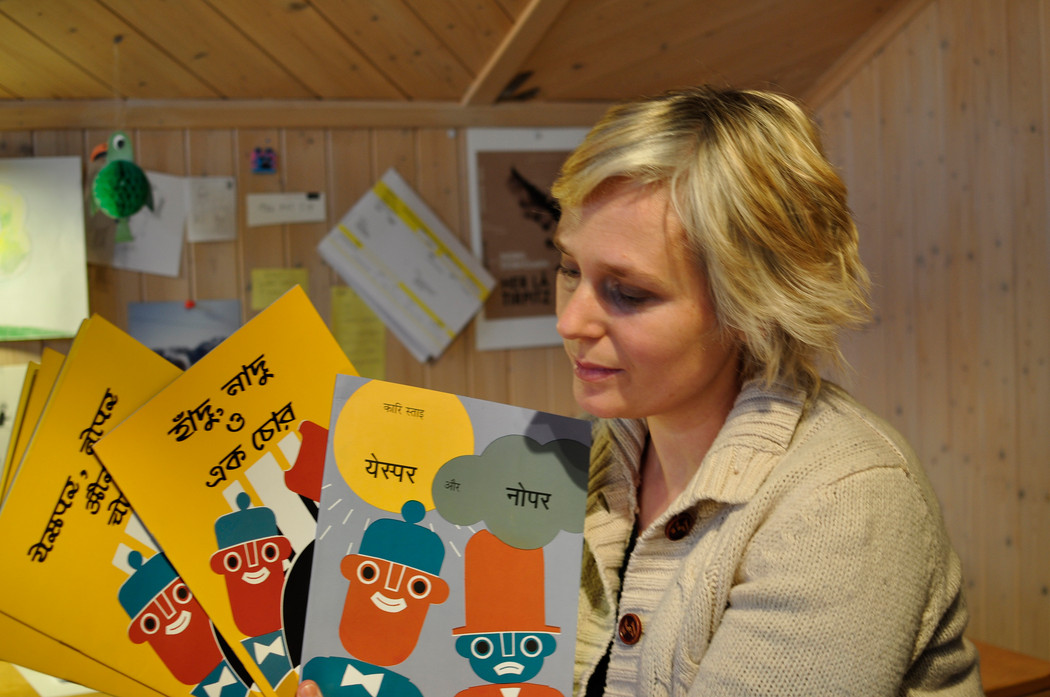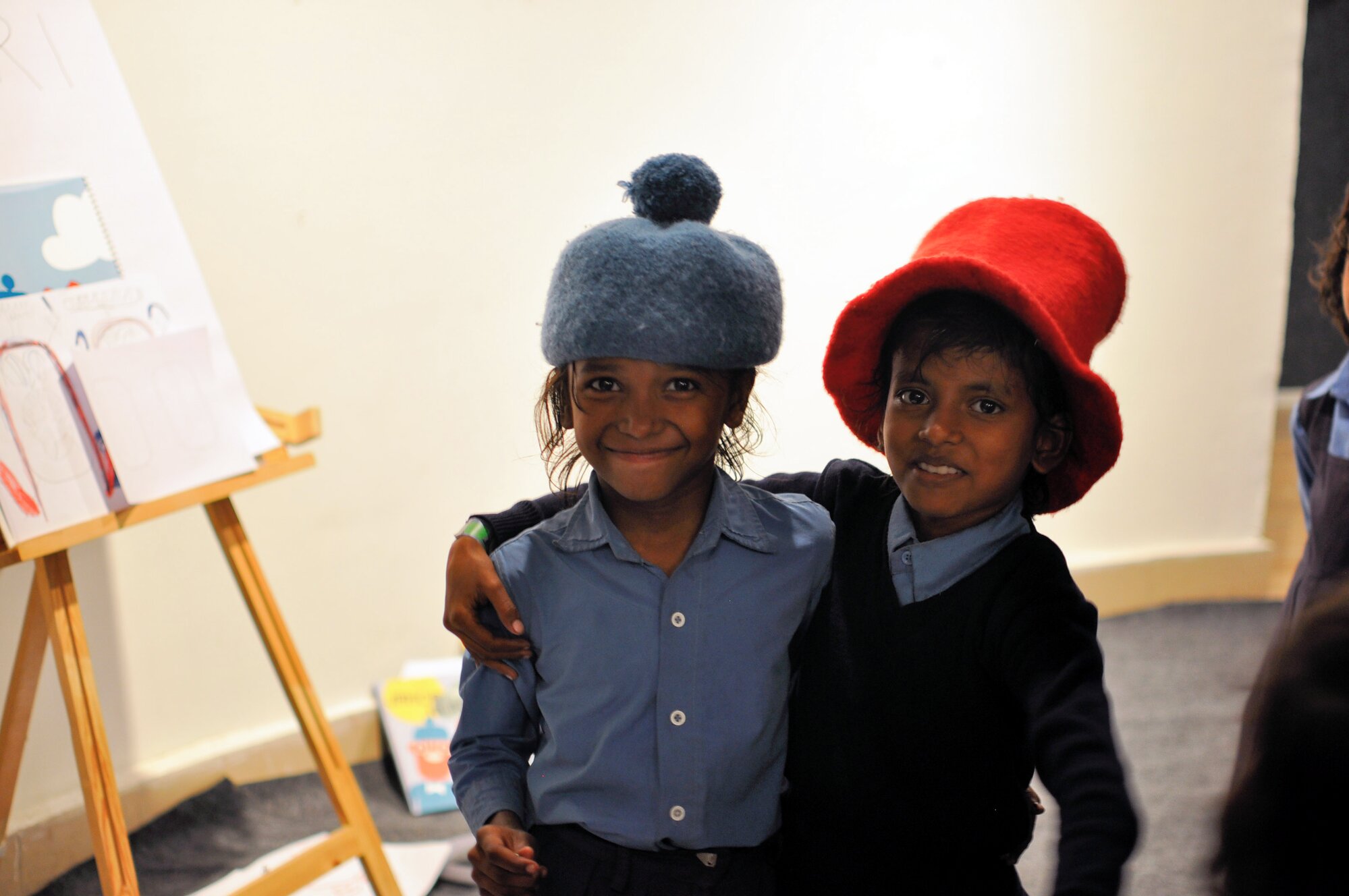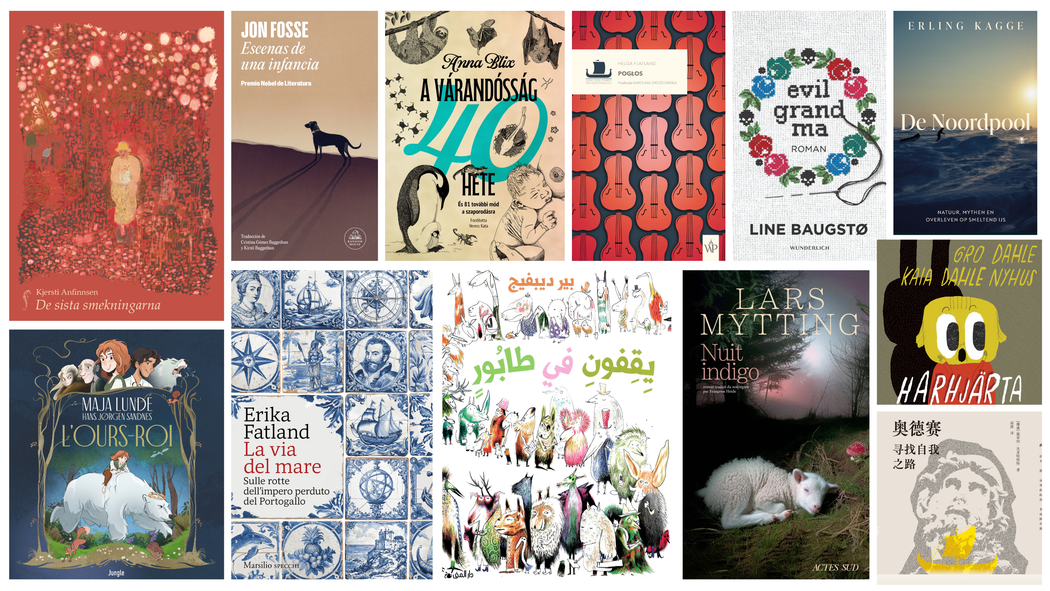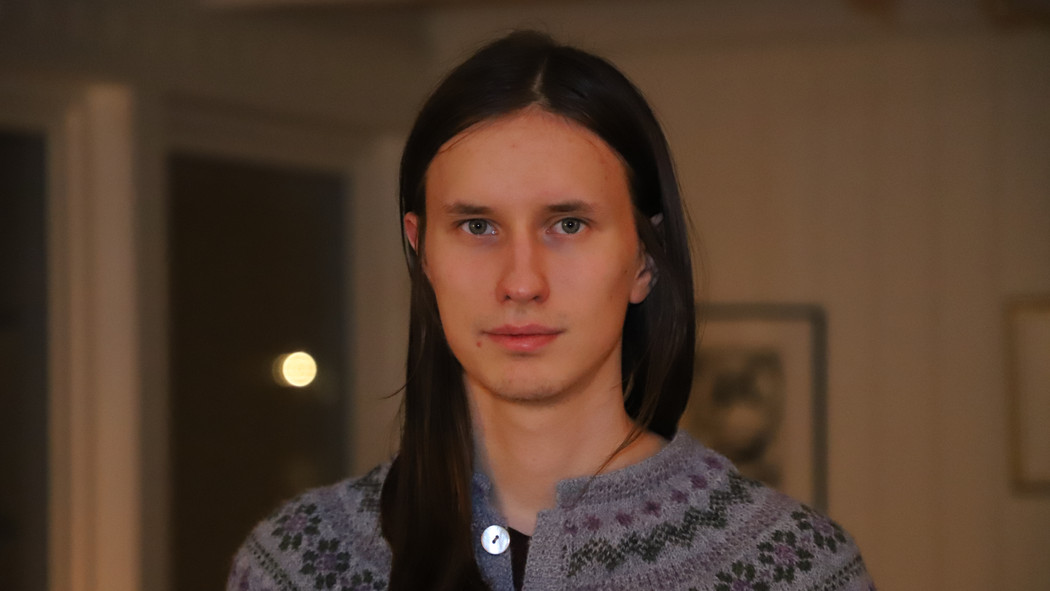A trip to India – and an interview with Kari Stai
It is our pleasure to be able to share an interview with the children’s book author and illustrator Kari Stai, who recently visited India to attend the children’s book festival Bookaroo in New Delhi and present her books about Jakob and Neikob. The trip received funding from the Norwegian Ministry of Foreign Affairs’ developing nations programme Land i Sør.

You have just returned from India where you launched your first two picture books about Jakob and Neikob in all of three languages: English, Hindu and Bengali. Congratulations on these wonderful publications!
In India you met, among others, children from a school for underprivileged children in New Delhi (both Muslim and Hindu children) and also children taking part in scheduled events at the children’s book fair Bookaroo. How did the Indian children respond to Jakob and Neikob?
In general, I found that the children were extremely interested and craving to be read to. They were also very eager to speak about contradictions afterwards, about yes and no, and were careful to raise their hands before answering. Clearly disciplined and humble. They expressed a great deal of gratitude, and the wish be seen through their drawings. The desire for a response was huge. The children from the middle class who were at the festival seemed more assertive and outspoken in this encounter, while the children from the poorer school seemed more reserved, as if they weren’t as accustomed to receiving so much or having the chance to make their opinions heard. They were especially genuine and thankful afterwards. It seemed like everyone understood the message of the books and there was a lot of laughter and other kinds of reactions. The ability to say yes and no is perhaps universal, and an area associated with the same familiar challenges.

Was the response different from that of Norwegian children’s encounters with your main characters?
My experience was that the response was relatively similar to that of Norwegian children, and that humour and play through language is universal. School classes, whether from India or Norway, seem to have the same composition: some are introverted and others more extroverted and talkative. But the Indian children seemed less privileged when it came to having such cultural experiences on the class schedule than Norwegian children. I don’t think they had a Cultural Rucksack Programme there.

You have probably had a number of thoughts about the differences between India and Norway and perhaps especially about the living conditions for children growing up in India and Norway?
Yes, there were many impressions that stayed with me in different areas. For example, the schools were very different in terms of the quality of teaching and teachers, based on whether one lived in a poor or more affluent area. This was very clear there, while in Norway, the public school is to be of a good standard regardless of where it is located. Another thing was the traffic. It was very hectic, chaotic and the vehicles were generally without seatbelts. There were children on mopeds secured only by the arm of their mother or father and without any helmet. New Delhi is also an extremely polluted city and I would imagine that many there had respiratory problems. On the whole: the system for Norwegian children is probably safer to a certain extent, more just and better. But most of all after the trip I have thought about the daily lives of many children in India. This after having familiarised myself with the work of peace prize winner Kailash Satyarthi. Because even though I met a good number of children, there were probably just as many Indian children who had to work.
Which experiences in India made the biggest impression on you?
It made a strong impression on me seeing young children walking around on the streets who did not appear to have any safe and stimulating support system in place. Unkempt, without shoes, without parents who looked after them, I saw a number of children who seemed to be left a great deal to their own devices.
Just a few days after I came home from India I was following along with the Nobel Peace Prize and was very moved by the work of Indian Kailash Satyarthi, and Pakistani Malala Yousafzai. The documentary broadcast on NRK2 produced by French Hubert Dubois, INA, gives a powerful depiction of child labour and the fantastic work done by Kailash Satyarthi in fighting against this. This had a particularly strong impact on me in that I had just been there. I recommend that everyone see it.
Meeting the many volunteers who were involved in helping many of the children from the slums also made a strong impression on me. Two of these women had doctorates. It moved me to see the collective helpfulness that reigned in a society with so many challenges.
This year fortunately a third book about Jakob and Neikob has been published: The Empty Room (Det tomme rommet).
Can you promise that there will be even more books about Jakob and Neikob?
Ha ha, well, I certainly hope so. On the one hand I would like to just jump into the next book about them right away, while another part of me is in the process of learning that things take the time that they need. I have some thoughts about a new manuscript, but nothing solid enough that I can promise anything yet. But I am trying to learn to trust that if it is meant to be, it will be. As long as the idea and the message are good enough.
Read more about Kari Stai’s visit to India here.
Visit Kari Stai’s website (in Norwegian) here.
Foreign rights on books in the Yesper and Noper series are sold to six languages. Read more.
Read more about the publisher Sampark which has published the books in India here.
More about the Bookaroo Children’s Literature Festival here.
All photos: © Kari Stai.


